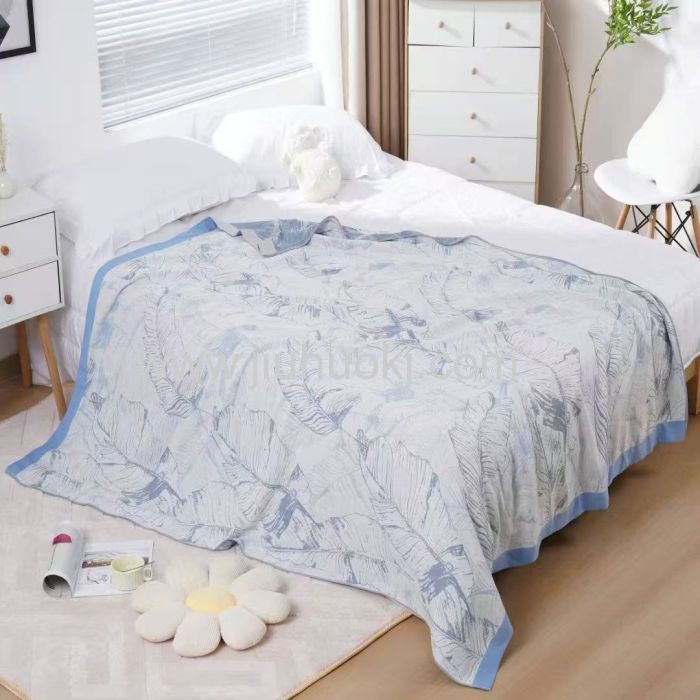
Your Guide to Sustainable Home Textiles: Bamboo and Beyond
Why Bamboo Leads the Sustainable Home Revolution
Bamboo fiber is a game-changer for home textiles because of its amazing growth rate and eco-friendly properties. This grass grows incredibly fast, with some species reaching up to 91 cm in a single day. It is a highly renewable resource that needs far less water than cotton—about one-third the amount. Bamboo crops also grow successfully without any pesticides. The manufacturing process can be very clean. The Lyocell method, for example, reuses over 99% of its water and solvents in a closed-loop system. Fabrics made from bamboo are naturally temperature-regulating, antibacterial, and super absorbent, able to take in 60% more moisture than cotton. For true sustainability, look for mechanically processed bamboo linen rather than chemical bamboo viscose.
Beyond Bamboo: Other Sustainable Materials to Know
Many other materials offer excellent green credentials for your home. Hemp is a powerhouse plant; it produces 250% more fiber per acre than cotton and requires almost no pesticides. Linen, made from flax, is another strong choice. It uses 60% less water than cotton to grow and actually improves soil health through crop rotation. For a recycled option, consider recycled polyester. This material gives new life to plastic bottles, reducing our need for new petroleum-based products. Tencel™ Lyocel, made from sustainably harvested eucalyptus trees, is another top-tier fiber known for its closed-loop production process.
Understanding Certifications and Decoding Labels
Trustworthy certifications help you avoid false marketing claims, known as greenwashing. The Global Organic Textile Standard (GOTS) is a key label to look for. It ensures textiles are made with a high percentage of organic fibers and that strict environmental and social criteria are met throughout production. The OEKO-TEX Standard 100 certification tests the final product to guarantee it is free from harmful levels of over 100 toxic substances. The bluesign® system approves both the fabric and the manufacturing process, making sure all components meet high safety and environmental standards. Always look for these specific certifications instead of vague terms like "eco-friendly."
The Lifecycle View: Sustainability from Start to Finish
Evaluating a textile's full lifecycle is essential for understanding its true impact. This means looking at everything from how the raw material is grown to how the product is finally disposed of. The manufacturing stage is often very resource-intensive; traditional cotton dyeing can use up to 200 tons of water per ton of fabric. Innovations like digital printing can reduce this water use by 95%. How you care for an item also matters. Washing in cold water and air-drying significantly reduces energy consumption. At the end of its life, a truly sustainable textile should be recyclable or compostable, completing a circular loop and avoiding the landfill.
Room-by-Room Guide to a Sustainable Home
You can make every room in your home greener with smart textile choices. For your bedroom, choose sheets made from organic cotton or bamboo. Look for a mattress with GOTS-certified wool or natural latex. In the bathroom, opt for highly absorbent hemp towels and bath mats made from recycled cotton. The kitchen is perfect for durable, compostable linen napkins and organic cotton dishcloths. In the living room, select cushions stuffed with recycled polyester and curtains made from insulating hemp or linen. To make your purchases last longer, always follow care labels: wash in cold water, dry naturally, and avoid harsh chemical softeners.
The Future of Sustainable Textiles
The next generation of home textiles is already taking shape through incredible innovation. Scientists are developing fabrics made from captured carbon emissions, turning pollution into polyester. Other companies are using biology, employing bacteria, algae, and fungi to actually grow new materials like leather and fibers. Smart textiles are also emerging, with self-cleaning coatings that reduce washing needs and phase-change materials that help with temperature control. New water-free dyeing techniques that use supercritical CO2 instead of water will massively reduce pollution. These advances promise a future where our homes are not just sustainable, but actively restorative.

